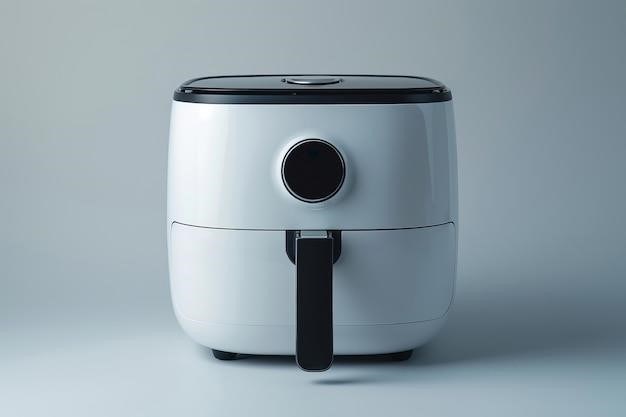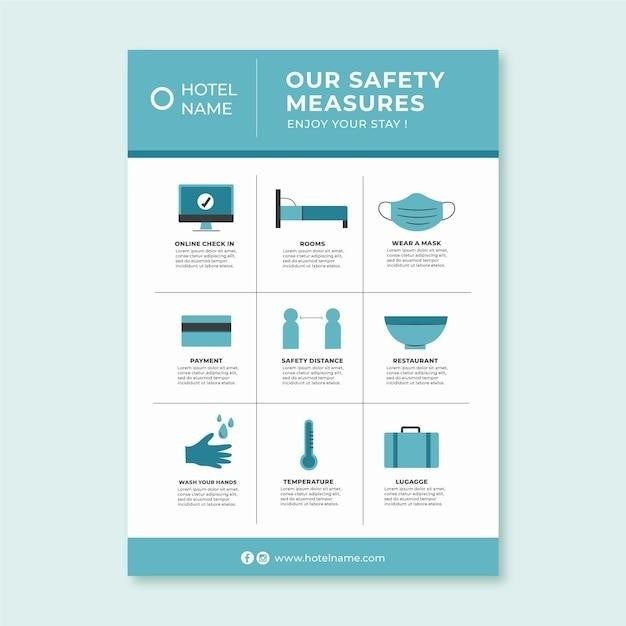Manual Control⁚ A Comprehensive Overview
Manual control refers to the traditional method of adjusting instrument parameters using physical controls and dials, which have largely been replaced by more automated systems. It encompasses a wide range of applications, from basic switches and knobs to complex control panels found in industries like aviation, manufacturing, and robotics. This overview explores the fundamental concepts, types, and applications of manual control, examining its advantages and disadvantages in modern technological contexts.
Introduction
Manual control, a cornerstone of early technological development, involves the direct manipulation of machines and systems using human input. It encompasses a diverse array of methods, from simple switches and levers to intricate control panels found in aircraft cockpits and industrial settings. This fundamental concept of human-machine interaction has played a pivotal role in shaping our technological landscape.
Historically, manual control was the primary means of interacting with machines. From the rudimentary levers and gears of early machinery to the intricate control panels of early automobiles, human operators were integral to the operation of these devices. However, with the advent of automation and computerization, manual control has gradually evolved, becoming a more specialized domain within a broader spectrum of human-machine interaction.
Despite the rise of automation, manual control remains a crucial component of many technological systems. It provides a direct and intuitive means of interaction, offering a level of precision and adaptability that automated systems may not always achieve. This makes manual control particularly relevant in situations demanding real-time decision-making, fine-tuning of processes, or the need for immediate adjustments to complex systems.
Types of Manual Control
The realm of manual control encompasses a diverse array of methods and devices, each tailored to specific applications and requirements. These methods can be broadly categorized based on their underlying principles and the nature of the human input involved. Two prominent categories include⁚
Manual Pulse Generators
Manual pulse generators are devices that generate electrical pulses in response to user input, typically through the rotation of a knob or dial. These pulses are then used to control the operation of a system. They are commonly found in applications where precise adjustments or incremental changes are required, such as in machine tools, robotic systems, and laboratory equipment. The generated pulses can be used to control the speed, position, or other parameters of the system.
Manual Valve Actuators
Manual valve actuators are mechanical devices that allow for the manual control of valves. These actuators are typically used in applications where the flow of fluids or gases needs to be controlled. They come in various configurations, including handwheels, levers, and push buttons, each providing a different method of actuation. The choice of actuator depends on the specific requirements of the application, such as the size of the valve, the operating pressure, and the desired level of precision.
Manual Pulse Generators
Manual pulse generators are a fundamental component in manual control systems, acting as the intermediary between human input and the controlled system. They are typically characterized by their ability to generate a series of electrical pulses in direct response to user actions, most commonly the rotation of a knob or dial. This mechanism allows for precise, incremental control over a wide range of parameters within the controlled system.
The operation of a manual pulse generator is relatively straightforward. When the user rotates the knob or dial, a mechanical linkage within the generator translates this rotation into a series of electrical pulses. The frequency and duration of these pulses are directly proportional to the speed and direction of the rotation, enabling precise control over the system’s response. These pulses are then transmitted to the control system, where they are interpreted and used to adjust the desired parameter.

Manual pulse generators find widespread application in various fields, including⁚
- Machine Tools⁚ In machine tools, manual pulse generators are used to control the movement of axes, enabling precise positioning and machining operations.
- Robotics⁚ In robotics, they are used to control the movement of robot arms and other actuators, providing fine control over position and orientation.
- Laboratory Equipment⁚ They are also used in laboratory equipment, such as pipettes and dispensing systems, to control the volume of liquids being dispensed.
Manual Valve Actuators
Manual valve actuators, often referred to as handwheels, are mechanical devices that provide a direct and intuitive means of controlling the opening and closing of valves. These actuators are commonly used in various industries, including water treatment, oil and gas, and chemical processing, where manual control of fluid flow is essential. They are characterized by their simple design and robust construction, ensuring reliable operation in demanding environments.
The basic principle of operation for a manual valve actuator involves a handwheel connected to a mechanical linkage that directly interacts with the valve stem. When the handwheel is turned, the linkage translates this rotation into linear motion of the valve stem, thereby opening or closing the valve. The direction of rotation determines the valve’s action, with clockwise rotation typically closing the valve and counterclockwise rotation opening it.
Manual valve actuators are available in a range of sizes and configurations to suit different valve types and applications. Key considerations in choosing a manual valve actuator include⁚
- Valve Size⁚ The actuator must be compatible with the size of the valve it is controlling.
- Operating Pressure⁚ The actuator should be rated for the operating pressure of the system.
- Torque Requirements⁚ The actuator should be able to provide sufficient torque to open and close the valve effectively.
Manual Control in Robotics and Automation
Manual control plays a crucial role in robotics and automation, providing a direct and intuitive interface for human operators to interact with and guide robotic systems; While automation aims to minimize human intervention, manual control remains essential for tasks that require human judgment, adaptability, and dexterity.
In industrial robotics, manual control is often used during the initial setup and programming stages. Operators manually guide the robot arm through a series of desired movements, recording the corresponding joint angles and positions. This data is then used to create a program that the robot can execute autonomously. Manual control is also employed for tasks that require flexibility and real-time decision-making, such as handling irregular objects or navigating unpredictable environments.
Manual control in robotics often involves the use of joysticks, teach pendants, or other input devices that allow operators to provide commands directly to the robot. These devices provide intuitive control over the robot’s movement and actions, enabling human operators to guide the robot’s behavior in complex or unpredictable situations.
The integration of manual control with advanced automation technologies, such as machine learning and artificial intelligence, is expanding the capabilities of robotic systems. Human operators can now use manual control to fine-tune the behavior of autonomous robots, improving their performance and enabling them to handle more complex tasks.
The Manual Control Protocol
The Manual Control Protocol (MCP) is a standardized communication protocol designed to facilitate the control of systems using a standard joystick or joystick-like input device. This protocol is particularly relevant in the fields of robotics, unmanned aerial vehicles (UAVs), and other applications where remote or manual control is necessary. The MCP defines a set of axes and buttons that are mapped to specific control functions, allowing for consistent and predictable control across different platforms and systems.
The MCP’s primary aim is to streamline the development and deployment of manual control systems by providing a common language for communication between input devices and the controlled system. This standardized approach simplifies the integration of joysticks and other control devices, reducing the need for custom drivers and configuration settings. The protocol typically transmits data packets containing information about the joystick’s position, button states, and other relevant inputs, enabling the controlled system to interpret and respond accordingly.
The MCP’s versatility makes it suitable for a wide range of applications, from controlling model aircraft and quadcopters to operating industrial robots and unmanned vehicles. Its standardized nature promotes interoperability, allowing different manufacturers and developers to create compatible control systems that can seamlessly interact with each other.
Manual Control in Aviation
Manual control plays a crucial role in aviation, particularly in the context of aircraft flight control. While modern aircraft rely heavily on sophisticated autopilot systems and electronic flight control systems (EFCS), manual control remains essential for critical phases of flight, emergency situations, and pilot training. Pilots are trained extensively to maintain control of the aircraft using the flight controls, which include the yoke or stick, rudder pedals, and throttle levers.
Manual control allows pilots to directly manipulate the aircraft’s flight surfaces, such as the ailerons, elevators, and rudder, to achieve desired changes in altitude, direction, and speed. It provides the pilot with a direct and immediate connection to the aircraft, enabling them to react quickly and precisely to changing conditions or unexpected events. Manual control is particularly important during take-off and landing, when precise control is essential for a safe and successful maneuver.
In emergency situations, pilots may need to revert to manual control if the autopilot or EFCS fails. This requires a high level of skill and proficiency, as pilots must be able to maintain control of the aircraft manually while dealing with the emergency situation. Manual control also plays a significant role in pilot training, allowing students to develop their hand-eye coordination and understanding of aircraft dynamics before transitioning to more advanced flight control systems.
Manual Control in Industrial Applications
Manual control remains a vital component in various industrial applications, offering a direct and intuitive approach to process management. It finds its place in manufacturing, process control, and other areas where precise adjustments and immediate feedback are crucial. In manufacturing, manual control is often employed in machine operation, where operators can directly manipulate tools, levers, or buttons to control the movement and function of equipment. This allows for flexibility and adaptability, particularly in tasks that require intricate or non-standardized operations.
In process control, manual control provides a means for operators to adjust variables like temperature, pressure, or flow rate in real-time. This is particularly relevant in situations where automated systems are not feasible or where human intervention is required for optimal performance. Manual control systems are typically equipped with dials, gauges, and switches that allow operators to monitor and adjust process parameters, ensuring safe and efficient operation. Examples include manual control of valves, pumps, and other process equipment, where operators can directly regulate flow rates, pressures, and other critical parameters.
While automation is gaining ground in many industrial processes, manual control remains essential for various applications, particularly those requiring human judgment, adaptability, and immediate intervention. It provides operators with a direct connection to the processes they manage, enabling them to make informed decisions and ensure optimal performance in real-time.
Manual Control in Manufacturing
Manual control plays a significant role in manufacturing, particularly in tasks that require precision, flexibility, and adaptability. While automation is increasingly prevalent, manual control remains essential for various operations, offering direct control over equipment and processes. In manufacturing, manual control is often employed in machine operation, where operators directly manipulate tools, levers, or buttons to control the movement and function of equipment. This allows for flexibility and adaptability, particularly in tasks that require intricate or non-standardized operations.
Manual control is also crucial in assembly processes, where operators may use hand tools to assemble components, align parts, and ensure proper fit and function. This approach is particularly valuable in situations where automated systems are not feasible or where human intervention is required for optimal results. In addition, manual control is often employed in quality control, where operators visually inspect products, measure dimensions, and perform other manual checks to ensure that items meet quality standards. This hands-on approach allows for immediate detection of defects and ensures that only compliant products are released to the market.
While automation is transforming many aspects of manufacturing, manual control continues to play a vital role, particularly in areas where human expertise, judgment, and adaptability are essential. From machine operation to assembly and quality control, manual control remains an integral part of many manufacturing processes, ensuring precision, flexibility, and quality control.
Manual Control in Process Control
Manual control plays a vital role in process control, offering direct intervention and adjustment of parameters to maintain optimal system performance. While automated control systems are increasingly common, manual control remains essential for various scenarios, particularly during startup, shutdown, emergency situations, and fine-tuning processes. In process control, manual control involves operators directly manipulating valves, switches, or other control devices to adjust flow rates, temperatures, pressures, or other critical parameters. This provides immediate control over the process, allowing operators to respond quickly to changing conditions or unexpected events.
Manual control is often used during startup and shutdown procedures, where operators manually initiate and monitor the process, ensuring a smooth transition from one state to another. It is also critical in emergency situations, where automated systems may fail or require manual intervention to prevent accidents or minimize damage. Additionally, manual control is frequently used for fine-tuning processes, where operators adjust parameters to optimize performance, efficiency, or product quality. This fine-tuning often requires human judgment and experience, which automated systems may not always replicate effectively.
While automated systems are increasingly prevalent in process control, manual control remains an essential component, providing operators with direct control over critical processes, enabling them to respond swiftly to changing conditions and ensure optimal system performance. This hands-on approach is particularly valuable during startup, shutdown, emergency situations, and fine-tuning, where human judgment and intervention are crucial.
Advantages and Disadvantages of Manual Control
Manual control, despite its apparent simplicity, offers a unique set of advantages and disadvantages that make it both valuable and limited in various applications. Understanding these aspects is crucial for determining the suitability of manual control in specific scenarios.
One of the primary advantages of manual control is its directness. Operators have immediate and precise control over the system, enabling them to respond swiftly to changing conditions or unexpected events. This direct control is particularly valuable in situations where automated systems might be too slow or unreliable, or where human judgment is essential for optimal performance. Moreover, manual control can be more cost-effective than automated systems in some cases, particularly for smaller or simpler applications. The initial investment and maintenance costs of manual control systems are often lower than those of automated systems.
However, manual control also comes with several disadvantages. It is prone to human error, as operator fatigue, inattention, or lack of expertise can lead to incorrect adjustments or missed signals; This can result in reduced system performance, safety hazards, or even damage to equipment. Additionally, manual control can be labor-intensive, requiring operators to constantly monitor and adjust the system. This can be tedious and inefficient, particularly for complex or high-volume processes. Furthermore, manual control systems are often less flexible and adaptable than automated systems, making it difficult to modify or upgrade them to meet changing needs.
Advantages
Manual control, despite its apparent simplicity, offers several advantages that make it a valuable tool in various applications. Its directness and immediate feedback are particularly appealing in situations where human judgment is essential or where automated systems might be too complex or unreliable. One of the primary advantages of manual control is its directness. Operators have immediate and precise control over the system, enabling them to respond swiftly to changing conditions or unexpected events. This direct control is particularly valuable in situations where automated systems might be too slow or unreliable, or where human judgment is essential for optimal performance. For example, in emergency situations, a skilled operator can quickly override automated systems to prevent potential hazards or optimize system response. Moreover, manual control can be more cost-effective than automated systems in some cases, particularly for smaller or simpler applications. The initial investment and maintenance costs of manual control systems are often lower than those of automated systems. This makes manual control an attractive option for applications where budget constraints are a significant factor.








